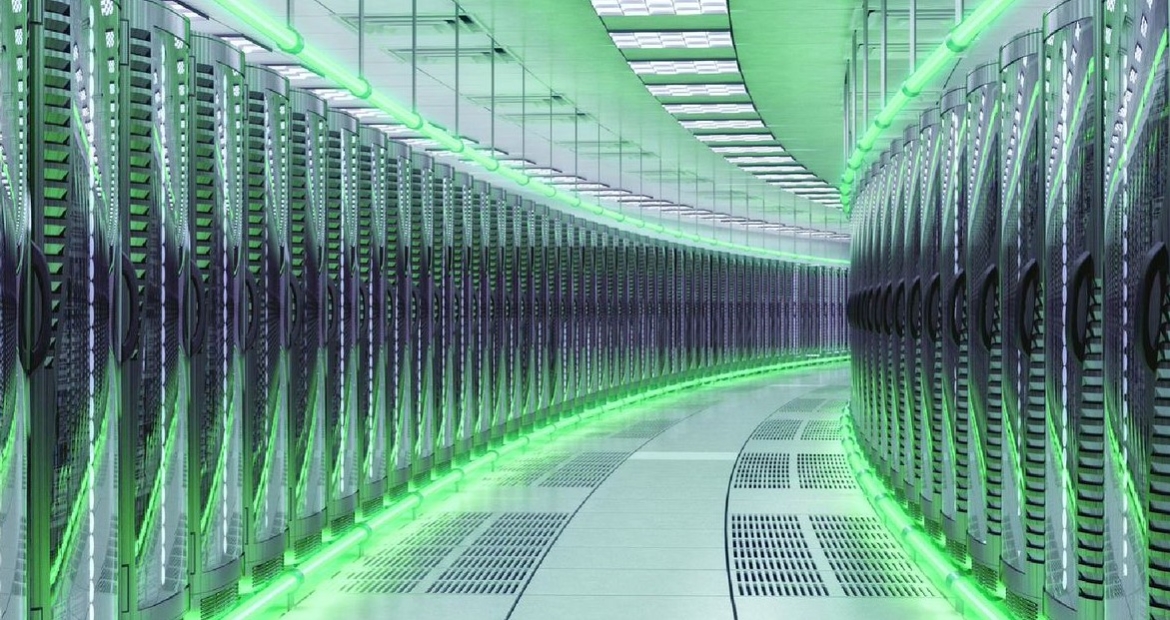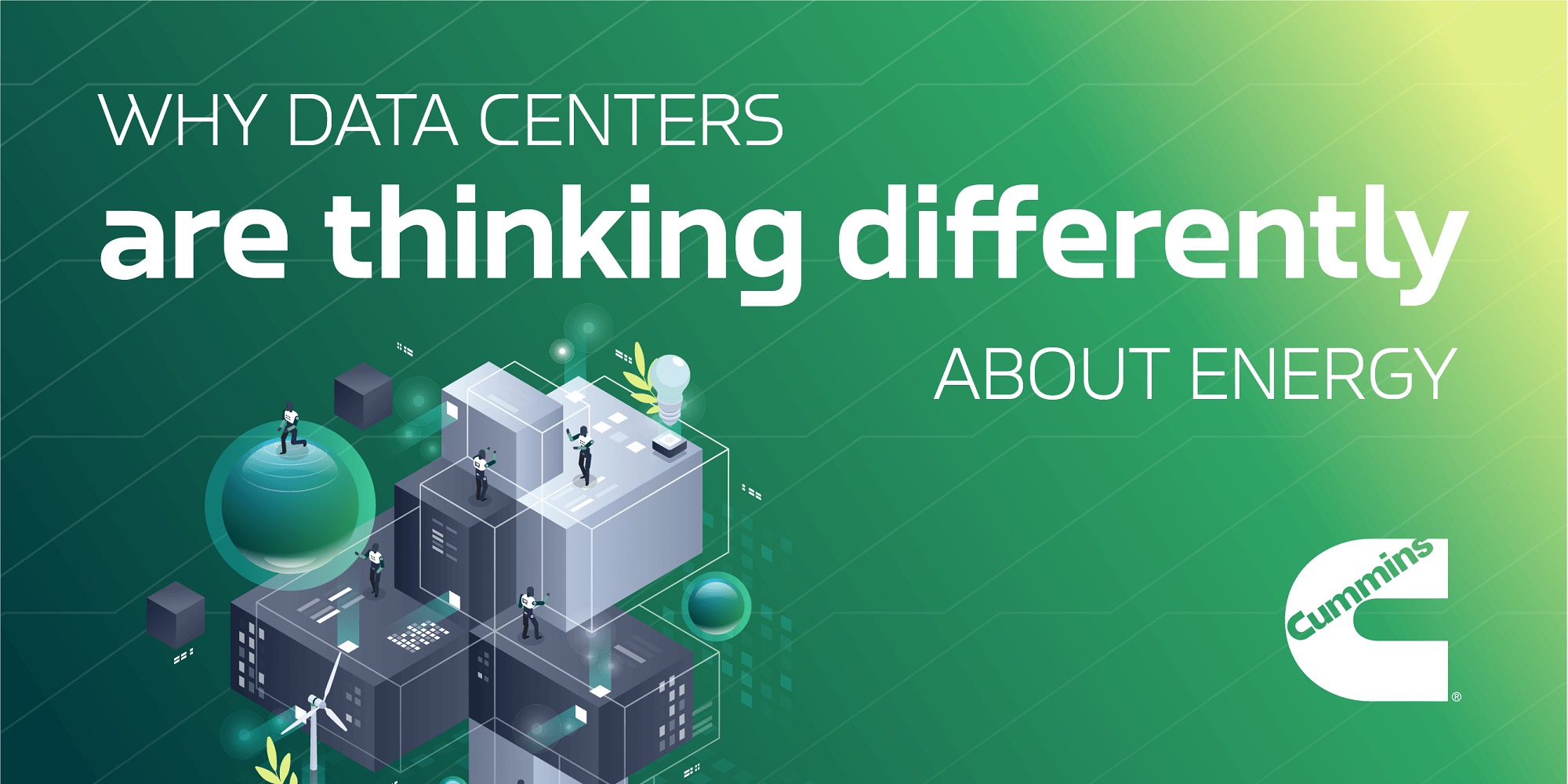Why data centers are thinking differently about energy
By Cummins Inc., Global Power Technology Leader

Data centers are the backbone of our rapidly evolving global digital economy. With the rising demand for computing power, it's increasingly important to have reliable and sustainable energy sources. Over the past few decades, data center architectures have reflected the benefits of a sufficient and reliable power grid infrastructure.
Now, they incorporate on-site battery storage and backup power generation assets to ensure uninterrupted electrical supply during grid outages. The need to address energy availability, sustainability, and affordability challenges is intensifying for data center operators. As a result, they recognize a number of market forces they need to adapt to and look to the future.

ESG and decarbonization are no longer an afterthought
Data centers account for 1% - 1.5% of global electricity use and operators acknowledge their impact on the environment. They set their own company goals to meet and exceed environmental, sustainability and governance (ESG) initiatives set by governing bodies. To meet carbon accounting goals, data centers are under pressure from local governments to report to shareholders and stakeholders. Investors are also offering incentives for conducting carbon accounting. Companies use the following greenhouse gas (GHG) accounting classification in their operations.
- Scope 1: GHG emissions from power generated by on-site assets. Data centers are looking to reduce energy-related scope 1 emissions. Examples of such technologies include hydrotreated vegetable oil (HVO) instead of diesel-fueled generators, standby battery energy storage, and natural gas or hydrogen-based technologies.
- Scope 2: GHG emissions from the power consumed from the grid. These are the bulk of data centers' emissions. To combat this, data centers are making agreements to source renewable energy from wind and solar sources. This is a rapid method for them to decrease their carbon footprint. It's much faster than continuing to purchase power from thermal power plants.
- Scope 3: GHG emissions from all other data center operations - from upstream suppliers to their downstream functions. An example is the GHG emissions associated with the production and delivery of their backup generators.
By accounting for scope 1, 2, and 3 emissions, data centers gain valuable insights into their environmental impact. This helps them identify areas of improvement and drive technology innovations and investments that can reduce their carbon footprint. As they continue to prioritize ESG initiatives, the industry will become increasingly sustainable and better equipped to address the energy and environmental challenges of the future.
Data center on-site energy assets are subject to tight emission regulations
Data centers usually choose diesel generators for backup power. Nonetheless, some local air quality authorities have more strict exhaust emissions regulations than national standards, such as EPA standards. These regulations aim to limit the environmental impact of data centers and their on-site energy assets are subject to these regulations that intend to limit their environmental impact. To achieve this, regulators may limit site emissions by reducing the number of operating hours allowed for on-site power generation.
To comply, data center operators and power asset manufacturers are taking steps to reduce their impact on local communities. Manufacturers are developing new engine control calibrations to reduce nitrogen oxide (NOx) emissions. They are also offering exhaust aftertreatment systems to further improve air quality. On the other hand, data centers are designing compliance strategies to adjust their operational and testing hours to meet these regulations. They might also incorporate new power generation technology and low-carbon fuel solutions to their portfolio.
On-site solutions to electrical grid constraints
Data centers worldwide run over 18 million servers. These servers put significant strain on the local electricity grids. It’s an issue particularly evident in areas like Northern Virginia and Dublin, Ireland where data centers account for a large portion of the grid demand. To generate some of the electricity they consume with their backup generator sets, data centers may need to exceed their permitted operating hours. The Virginia Department of Environmental Quality has considered temporarily allowing this to address the issue. Similarly, in Dublin, the state-owned electric power transmission operator has imposed limits on how much electricity data centers can draw from the grid. This has led to the need for alternative on-site, prime power solutions.
On-site power generation can bridge the gap of grid congestion issues caused by increased electricity demand. Data centers can generate some of their own electricity using backup power generation assets. Right now, generator sets are a reliable, mature technology that produce loss of power from a small physical footprint. As hydrogen supply chains mature, other assets like hydrogen fuel cells can provide low-carbon power to facilities in the future. Data center developers understand this well and are evaluating generators and other new technologies for prime power, not just emergency power.
Monetization opportunities through grid support programs
Data center power assets have the potential to benefit the company and others by participating in grid support programs. Data centers can agree to operate their assets during peak electrical demand phases of the day. This could include running air conditioning units at noon in Texas in August, for example. They can then either feed this power back to the grid or use it to essentially take their data center off the grid.
Energy aggregators are also making it easier than ever to monetize from power generation assets. Aggregators sign up large numbers of small distributed power generation resources and commercialize them as if they were a virtual power plant. The Federal Energy Regulatory Commission's Order No. 2222 makes it easier for on-site gensets and other distributed energy resources to access wholesale energy markets in the United States.
By participating in grid support programs, data centers can help make the electrical grid more resilient and reliable while further benefiting their company.
Data centers are changing the way they operate due to market forces like regulations, decarbonization goals, and grid capacity. Fortunately, Cummins Inc. is committed to partnering with data centers. This partnership will help data centers achieve their ESG goals and thrive in a rapidly changing industry. These opportunities not only help data centers meet market demands but also contribute to a greener and more sustainable future.
Author Profiles

Cummins Inc., Global Power Technology Leader
Cummins Inc., a global power solutions leader, comprises five business segments - Components, Engine, Distribution, Power Systems, and Accelera by Cummins - supported by its global manufacturing and extensive service and support network, skilled workforce and vast technological expertise. Cummins is committed to its Destination Zero strategy - the company's commitment to sustainability and helping its customers successfully navigate the energy transition with its broad portfolio of products. Cummins has approximately 69,900 employees and earned $3.9 billion on sales of $34.1 billion in 2024. See how Cummins is leading the world toward a future of smarter, cleaner power at www.cummins.com.